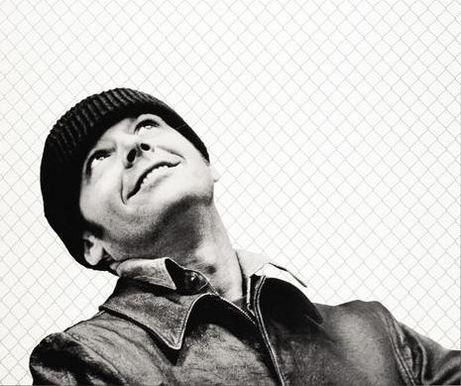Location #1 - The White Room
The most important thing we want to be clear about this room is that it is empty, to create an isolated area for our central protagonist. We want it to be lit very brightly, emphasising the contrast and to also help achieve this we plan on using a high exposure level whilst filming. For the overlayed images of the dead character, we require blood capsules which we will purchase before hand.
Location #2 - The Bedroom
We want to instantly signify this character's position as a writer so plan to sprawl post-it notes, torn up paper and possibly a typewriter in the room. We want the room to be unorganised to show that perhaps all is not right with our protagonist. We have discussed possibly placing an art poster such as Rene Magritte's "The Lovers" on the wall, to signify his strange, artistic nature.
When the character awakens onto the double bed, we want him to lay on one side of it with the other half folded open. This begins to signify he has a partner who has already woken up and left. By doing so it also begins to show perhaps a divide between them, but also that our central protagonist is waking up late.
Location #3 - The Kitchen
Again we want the kitchen to express our character's disorganised nature, with more notes scribbled everywhere, and perhaps a laptop on the worktop. We want to really emphasise his devotion to his work, and his struggle for ideas.
The character enters the kitchen to find his partner already up with breakfast for him. We also want the newspaper to at first be blocking our view of her face, to momentarily conceal her identity. We feel that a kettle boiling, could act as a nice cutaway shot before it stops in an awkward silence.
We have decided that using the daylight filter on the camera to create a reddish tint to the filming could work well in creating a warmer atmostphere, whilst at the same time signifying the red of blood.
UPDATE:
For our newly re-shot film opening we will not be using locations 2 and 3 and instead using:
Location #4: The Living Room
With the original version of our film opening, we felt that the second half lacked the quality and overall creativity of the first half. So instead of having the waking up and kitchen scene, we have decided to do another dream sequence.
The mise en scene for the second dream sequence will contrast to that of the first. Whereas the first dream sequence (which will still be used) created an overall feeling of emptiness and therefore isolation, we very much want the second to create an almost claustrophobic vibe. Therefore we intend to tightly pack the furniture into the room, and have it all arranged in a strange manner. For example, we will turn one of the sofas on it's side, coffee tables upside down, shelves and cupboards open etc. This is intended to signify how these strange events are taking over his life and surrounding him, but it also still connotes his generally disorganised nature.
Again contrasting the first dream, we want the colour to be much bleaker so we intend to use extreme lighting to darken the room.To lighten certain areas, for example the faces of characters, we are going to use a table lamp and reflector off screen.Also as part of our mise en scene is the use of candles (to signify a mourning and sense of loss), this will help provide flickers of light in certain areas.
CLOTHING
Paul Bateson -
In The White Room
We are going to try to seperate takes of this section, one with our protagonist wearing his general everyday scruffy clothes or dressing gown, and another more creative one in which he is wearing all white clothes (a shirt, trousers, shoes.
In The Bedroom
He wakes up on top of the covers rather than under them, showing his strange sleeping patterns. He can wear simply boxer shorts and a t-shirt, again connoting he does not prepare himself for bed in any planned way. Just before he leaves the room, he picks up his dressing gown on the way out. His hair is also scruffy to show his interrupted sleep.
In The Kitchen
He is now wearing the dressing gown he picked up over the top of his earlier clothes. He may have glasses on, but also deep shadows under his eyes, creating the tired atmosphere. We are going for a similar looking to that of Jack Nicholson in "The Shining" or Johnny Depp in "Secret Window".
Grace -
In The White Room
Again we will have two takes of this sequence, one in normal clothes and the other white, so we can see which works best for our final cut.We will also have the use of blood capsules, which will work very well when contrasting with all the white.
In The Kitchen
We debated whether she should be all dressed and ready for the day, implying he is up late, or perhaps she is wearing his clothes signifying their relationship and lifestyle. We felt wearing his clothes would be best as it really anchored their struggling lives, and their relationship as a couple.
UPDATE
For the new dream sequence
In The Living RoomFor this dream sequence we intend to have Grace wearing the same white clothing as in the white room. This will help to add a continuity between the dreams, and therefore linking all of the dreams together. Again the use of blood capsules will be needed, and we are currently looking into using the chroma key effect to really highlight the red of blood. But more on that later...




No comments:
Post a Comment